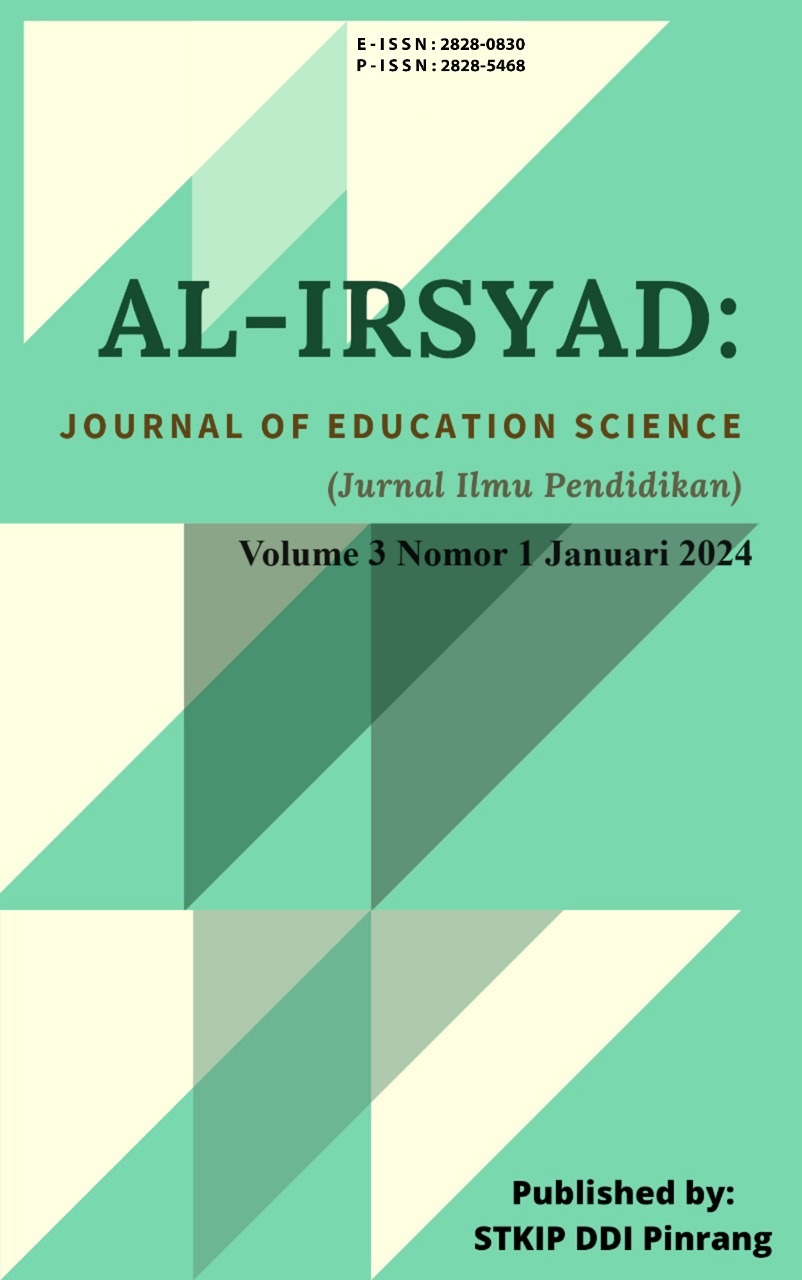INTONATION ERRORS OF THAI STUDENTS IN SPEAKING ENGLISH
DOI:
https://doi.org/10.58917/aijes.v3i1.102Kata Kunci:
Intonation Errors, Speaking English, Thai StudentsAbstrak
This research aims to determine how the intonation errors of Thai students in speaking English especially in rising and falling intonation. This research used a quantitative method of analysis. The type of this research is classroom action research (CAR). Meanwhile, CAR research is to find or apply a method or approach to learning in the class that is appropriate to the problem encountered. Furthermore, the researcher chose the fourth grade of Prathom Miftahuddeen (Banpleetai) School Nathawee, Songkhla, Thailand totaling 46 students. However, the researcher only took 20 students especially the 4/2 classes the sample of this research. The data in this research were obtained through Pre-Test, Cycle 1, Cycle 2. The data from the mean of the Pre-test, Cycle 1, and Cycle 2 using the SPSS 21 application. The research showed that students’ grades increase after being given the treatment using speech rising and falling intonation about the traditional food of Thailand (Tom Kha Kai). These are shown by the mean scores of the Pre-test (67,95% or 68%), the mean of Cycle 1 (83,15%), and the mean of Cycle 2 (95%). So the skill of the students in rising and falling intonation in the fourth grade of Prathom Miftahuddeen (Banpleetai) School Nathawee, Songkhla, Thailand has been successful and effective.
Referensi
Alek. (2016). Classroom Action Research Book. In Alex.
Arikunto, S. (2019). Penelitian Tindakan Kelas.
Bailey, K. M. (2017). Speaking. In D. Nunan, Practical English language teaching. In New York: Mcgraw-Hill Companies (pp. 47–59).
Brown, H. D., & Abeywickrama, P. (2020). Principles and Classroom Practices. White Plains, NY: Pearson Education.
Ermawati, E., Nurchalis, N. F., & Sardi, A. (2021). Online EFL Teaching and Learning: Different skills, Different Challenges. IDEAS: Journal on English Language Teaching and Learning, Linguistics and Literature, 9(1).
Idrus, I., Nirmala, S., & Sardi, A. (2022). Peningkatkan Hasil Belajar Matematika Melalui Pendekatan Quantum Teaching. Al-Irsyad: Journal of Education Science, 1(1), 35-47.
Keetha Kathirvel, H. H. (2020). The use of audio-visual materials as strategies to enhance speaking skills among ESL young learners. Creative Education, 11(12), 2599. (p. 4).
Roni Nursyamsu, L. A. M. (2019). A STUDY OF ENGLISH INTONATION IN INDONESIAN EFL LEARNERS.
Sardi, A. (2023). A HANDBOOK YOUR BASIC GRAMMAR For Beginner (Non-Native Speakers).
Sardi, A. (2023). CROSS CULTURAL COMMUNICATION AND INTERACTION (CULTURAL VALUES OF NORTH KOREA).
Sardi, A., Haryanto, A., & Weda, S. (2017). The Distinct types of diction used by the efl teachers in the classroom interaction. International Journal Of Science and Research (IJSR), 6(3), 1061-1066.
Surahmat, Z., Sardi, A., & JN, M. F. (2023). A CHAPTER REVIEW: SELECTING LANGUAGE FOR MATERIALS WRITING:(The Routledge Handbook of Materials Development for Language Teaching-Routledge). Al-Irsyad: Journal of Education Science, 2(1), 15-24.
van der Burght, C. L., Goucha, T., Friederici, A. D., Kreitewolf, J., & Hartwigsen, G. (2019). Intonation guides sentence processing in the left inferior frontal gyrus. Cortex, 117(0), 122–134. https://doi.org/10.1016/j.cortex.2019.02.011
Varga, L. (2017). Intonation and Stress: evidence from Hungarian.
Wells, J. (2019). English Intonation.
Yangklang, W. (2018). Improving English Stress and Intonation Pronunciation of the First Year Students of Nakhon Ratchasima Rajabhat University through an e-Learning. Procedia - Social and Behavioral Sciences, 91(1999), 444–452. https://doi.org/10.1016/j.sbspro.2013.08.442
Unduhan
Diterbitkan
Cara Mengutip
Terbitan
Bagian
Lisensi
Hak Cipta (c) 2023 Reskyani Reskyani

Artikel ini berlisensi Creative Commons Attribution 4.0 International License.






















